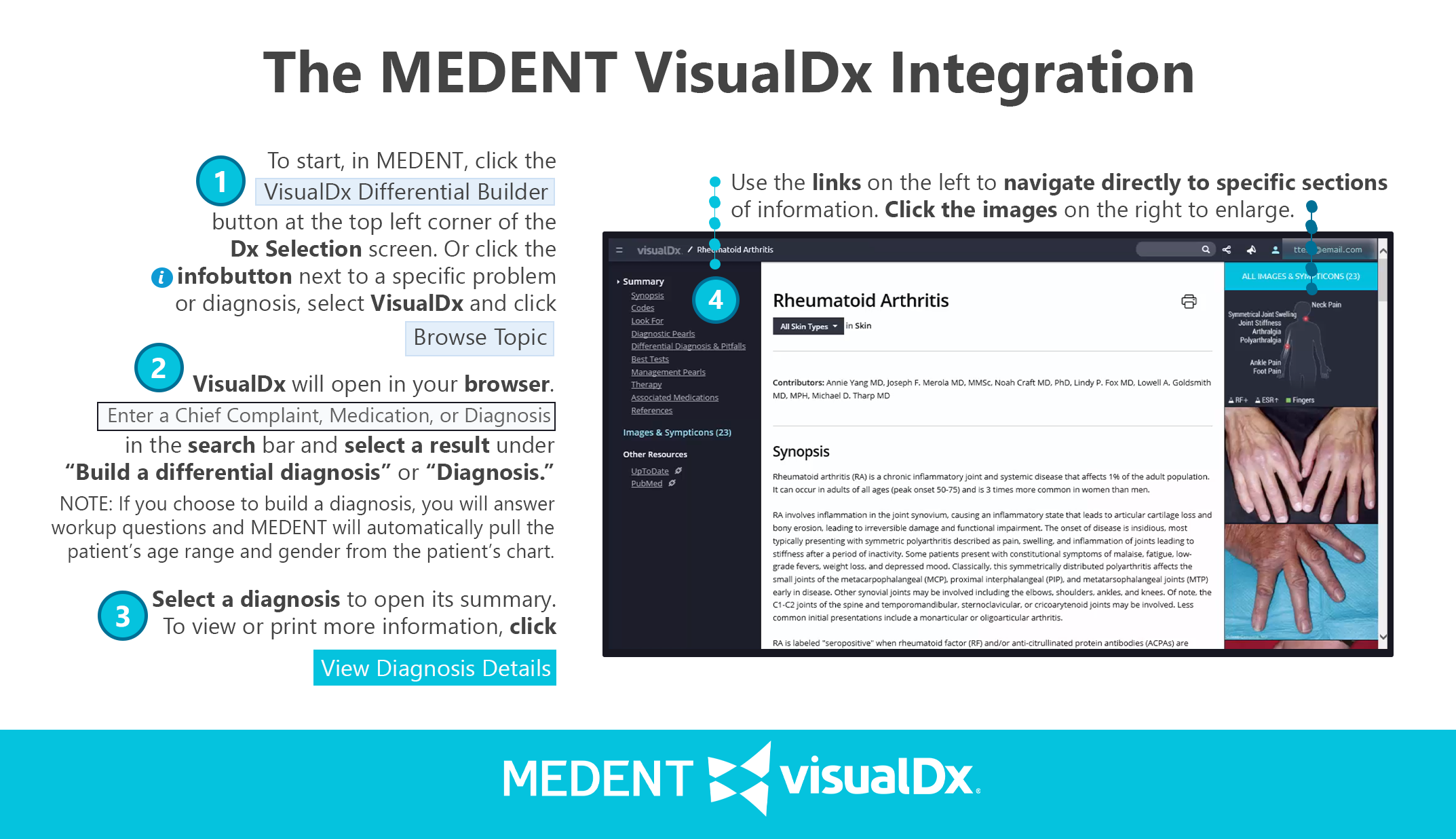
Speed for you. Satisfaction for patients.
Medicine's second opinion at your fingertips.
Trusted by today’s top medical professionals, VisualDx is an award-winning diagnostic clinical decision support system used in over 2,300 hospitals, clinics and medical schools worldwide. MEDENT has partnered with VisualDx to help clients save time, enhance decision-making and engage patients.
Can’t watch on YouTube? Click here to watch on medent.com!
With VisualDx, clinicians can:
- Build a custom differential diagnosis by entering a key finding across general medicine
- Review the world’s best medical image library to compare variations of disease on all skin types
- Access therapy and best tests options
- Understand medication reactions
- Recognize infections and travel-related illnesses
- Share images and information with patients
Key Features
When providers are unsure of a diagnosis, VisualDx is the go-to tool for fast, accurate support. Quickly build a differential to evaluate the possibilities, compare variations, and improve diagnostic accuracy at the point of care.
More Images. More Diagnoses.
VisualDx now covers 3,300 rare and common conditions represented by over 45,000 images and 3,500 Sympticons™.
Accessible Anytime, Anywhere.
Access clinical information and images at the point of care. VisualDx is always on call. Mobile. Tablet. Desktop.
Speed to Answer.
Smart search by chief complaint, diagnosis, or medication. Get quick therapy guidelines and rule out life-threatening emergencies.
Enhanced Patient Satisfaction.
Share images and disease information with patients to build confidence and strengthen the patient-clinician relationship.
Seamless Integration.
MEDENT's robust integration with VisualDx increases efficiency by taking advantage of patient-specific criteria.
Continuing Education.
Earn point-of-care CME AMA PRA Category 1 Credits™ with every VisualDx search.


3 Benefits of Using Technology to Improve Patient Care
Skin is often seen as the window into someone’s overall health. There are potentially life-threatening infectious diseases that can present with skin changes that look very different depending on the skin’s pigmentation. That is why it is imperative to not only train to these differences but also be equipped with technology to best understand these variations and provide the equitable care and the best care possible.
Recognizing how rashes present on darker skin types and training clinicians to reduce their own biases by is key to reducing diagnostic error, yet professional resources often do not meet the diagnostic needs of people with deeply pigmented skin. This can lead to worse health outcomes for the BIPOC patient population. Take melanoma, for example: Black patients are significantly more likely to be diagnosed with later stage melanomas than their white counterparts, and this makes them harder to treat.[i]

